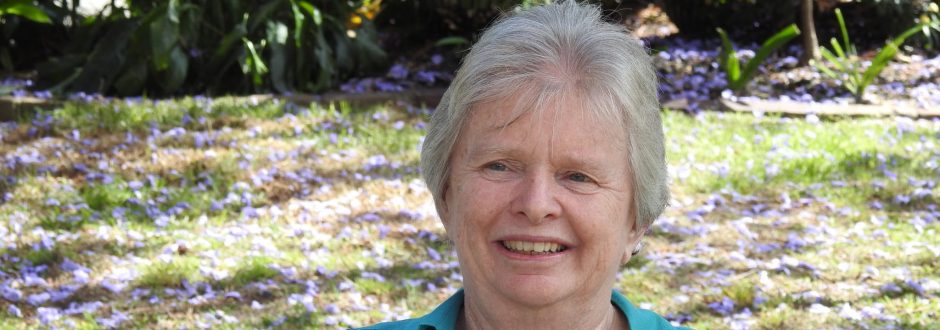If we are to be prophetic for our time, which is the fundamental calling of religious life in the Church, then changes beyond our contrivance are before us daily, says Good Samaritan Sister Clare Condon.
BY Clare Condon SGS
Recently one of our youngest sisters, Sister Grace Marcelo, who lives and ministers in Bacolod, on Negros Island, the Philippines, emailed me a picture of a huge tree which grows in the northern part of Negros Island. It is a Balete tree and the local people call it the “Wonder Tree”. This gigantic tree, with its branches extending in all directions, is believed to be 1,328 years old.
Immediately when I received this photo, I was reminded of the words of our founder, Archbishop John Bede Polding, at a fundraising event in 1870 for the sisters. It was the last time Polding spoke publicly to the whole Archdiocese of Sydney about the order of religious women he founded with the help of Scholastica Gibbons, a Sister of Charity. These are his words:
“The little plant has become a noble tree, and it has grown, not by human effort and contrivance, but under the unmarked breathing of God’s grace – and thus as ever, there is no room for us to boast, but a loud, loud call for thankfulness, and such future cooperation by gift and prayer as we shall have the grace to offer. ‘The Lord has done great things for us; we are become very joyful’.”
At that time – just 13 years after the congregation had been founded – there were 59 Sisters of the Good Samaritan. Our centre was at the House of the Good Shepherd, a refuge in Pitt Street, Sydney, right where Central Railway Station now stands. Neither John Bede Polding, nor Mother Scholastica Gibbons, nor the sisters themselves, knew what the future held for them.
But what they did know was that their religious life in the Church was the work of God, and their calling – which is our calling today – is one of accepting the gift and cooperating with that gift, through our prayer and daily lives. They knew the longevity of the Rule of St Benedict – being just a little bit older than that tree on Negros Island.
And so, as a religious community, we come to celebrate 160 years since our foundation with hearts full of thankfulness and joy. We come with an uncertainty about the nature of our future just like our forebears did. But we come together as sisters, oblates, partners in ministry, parishioners and friends, with trust and confidence. We acknowledge that if we are to be prophetic for our time, which is the fundamental calling of religious life in the Church, then changes beyond our contrivance are before us daily.
Like the “noble tree” that Archbishop Polding saw in 1870, we live an organic life; branches fall away, parts of it even die, new shoots emerge. But the solid trunk of our Benedictine tradition together with the Gospel, holds us together and keeps us strong and firm.
The Balete tree which grows on Negros Island is an image dear to us in many ways. We are committed to the earth which sustains us. It is an image used by Jesus in the Gospels. We can recall the fig tree, the sparrows nesting and the tiny mustard seed which becomes the largest of trees.
We had a huge Port Jackson fig tree in the front garden of Toxteth House, Glebe (now St Scholastica’s Congregational Centre of the Sisters). It was supposedly planted by Prince Albert, Duke of Clarence in 1881, when he dined with George Wigram Allen at Toxteth House. On Trinity Sunday in June 2006, right on midday, it simply collapsed and died. But it left its seed behind and a new young tree now grows vigorously in that front lawn.
So, as we commence our 160th anniversary year, a year that will also see our 26th gathering in Chapter, I pray that as a congregation we resolve to be open to new shoots – to nurture them, protect them and allow them to flourish. But may we also have the confidence and trust in God to allow the dead branches to fall away, to let go. May we allow the Gospel and our Benedictine tradition to guide us and to stand firm so we too can continue to produce good fruit.
The “Wonder Tree” in Negros has withstood the hurricanes and tsunamis that have battered that coastline for generations. Let us keep this image of stability in all its changing circumstances before us as we seek to be wonder-full too in our own unique way in the years ahead.
This is an edited text of an address delivered by Sister Clare Condon at St Scholastica’s Chapel, Glebe, on February 2, 2017, to celebrate the 160th anniversary of the foundation of the Sisters of the Good Samaritan. The community of Sisters was founded on February 2, 1857.
